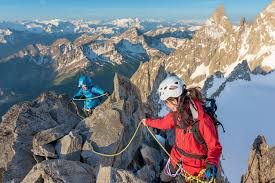Sherpa guide
A Sherpa guide refers to an individual, typically of Sherpa ethnicity from the mountainous regions of Nepal, who assists mountaineers in climbing expeditions, particularly in the Himalayas. Sherpas are renowned for their exceptional strength, endurance, and expertise in high-altitude climbing.
Key Roles of Sherpa Guides:
1. Route Setting: They often scout and establish safe routes up the mountains, setting up ropes and ladders over dangerous crevasses.
2. Carrying Supplies: Sherpas carry heavy loads of equipment, food, and other essentials, often exceeding 30 kg (66 lbs).
3. Campsite Setup: They prepare base camps and high-altitude camps along the climbing route.
4. Safety and Support: Sherpas assist climbers in emergencies, offering first aid or guiding them back to safety if conditions worsen.
5. Cultural Knowledge: They serve as cultural liaisons, sharing their deep understanding of the Himalayan terrain and traditions.
Why Are Sherpas So Renowned?
Sherpas are physiologically adapted to high altitudes, with a higher red blood cell count and efficient oxygen use. This makes them less susceptible to altitude sickness compared to others.
Famous Sherpa guides, such as Tenzing Norgay, who summited Mount Everest with Sir Edmund Hillary in 1953, have played pivotal roles in mountaineering history. Today, Sherpa guides remain essential for successful and safe expeditions in the Himalayas.
